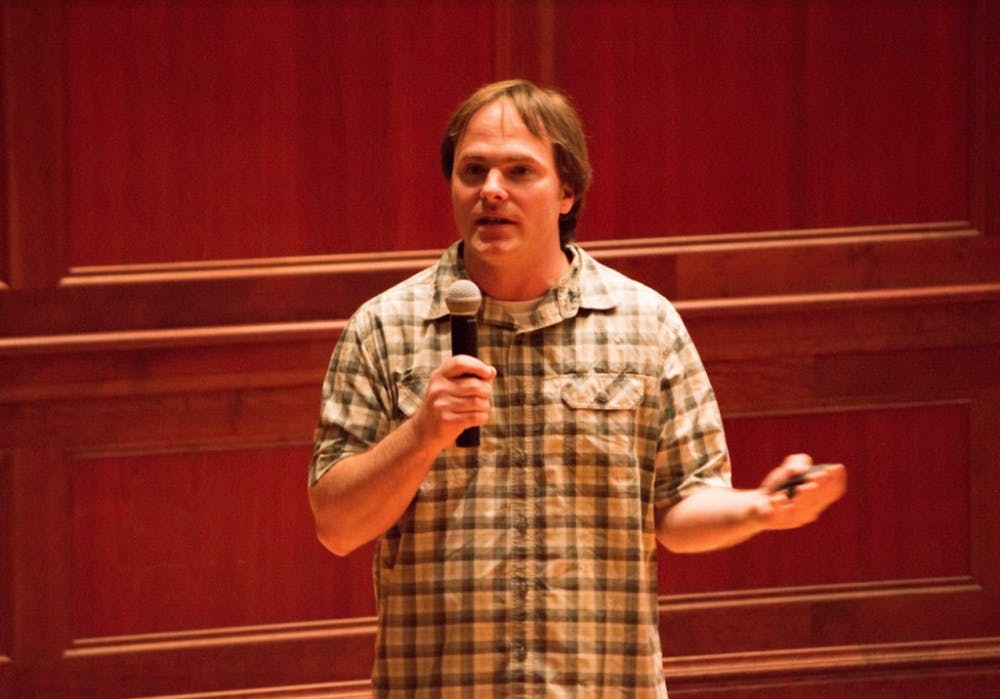By Emmy Liederman
Staff Writer
For the first 18 years of his life, John Kuiphoff, an associate professor of interactive multimedia, did not have access to Google. When problems arose, the only tool he could rely on was his own imagination.
“Without Google, you owned your own problems and you created your own solutions,” Kuiphoff said. “It was all about the journey. We built tree houses that were three stories high. Learning was completely hands-on and completely unsupervised.”
But now, the 36-year-old professor is using today’s most advanced technology to guide his work.
In a Brown Bag lecture titled “The Maker Movement: Opportunities for Student Innovation at TCNJ,” Kuiphoff discussed ways in which students can use modern resources, such as 3D printers and laser cutters, to foster their individual creativity and refocus on ideas rather than rely on technology for inspiration.
Kuiphoff believes search engines like Google have hindered the creative process by creating solutions with the touch of a button. His solution is MakerSpace, a program at the College that combines modern technology and individual innovation.
“What if you could have the best of both worlds: the exploratory charisma of the internet and a space where you could build anything, from a circuit board to a longboard?” Kuiphoff asked the audience.
MakerSpace, located in rooms 214 and 215 of the Art and Interactive Multimedia Building, invites students to utilize technology like 3D printers and laser cutters, which can cut and shape any material using a beam that is the width of a human hair, to create projects that can be designed for a specific person or purpose.
“If you just go over to the MakerSpace, you’ll be inspired by the level of activity that exists in such a small room,” said Assistant Dean of the School of Arts & Communication James Day. “There are so many different ways that we can all be empowered by these tools, and you are only really limited by your imagination.”
Students can learn how to use the machines through a class called digital fabrication, which is offered every semester and over the summer.
One MakerSpace project used the printer to turn photographs into sculptures of faces. Last year, a nursing major used the printer to create a 3-D replica of her own bone. Kuiphoff is looking to design a prosthetic leg for his mother’s three-legged black lab mix, Rainey.
“Their dog is still a puppy and can get around using only three legs,” Kuiphoff said. “But we are big animal lovers and want to give the dog the best possible future.”
MakerSpace has received $25,000 from the College to fund its program and will receive more funding in the future, partially in private donations, to keep its technology sustainable.
Although the technology is advanced, it is easy for students of any skill-level to master, according to Kuiphoff. In January, the studio will be open to students for workshops.
“Many of the people who come to MakerSpace have never made anything in their whole lives,” Kuiphoff said. “This space fosters learning.”
Although MakerSpace is generally geared toward art and IMM majors, Kuiphoff encourages students from all majors to take advantage of the space.
“You are living in the most expressive time in human history,” Kuiphoff said. “You have more resources than anyone has had before us. As you go through your respective fields, think about how making can be important.”







